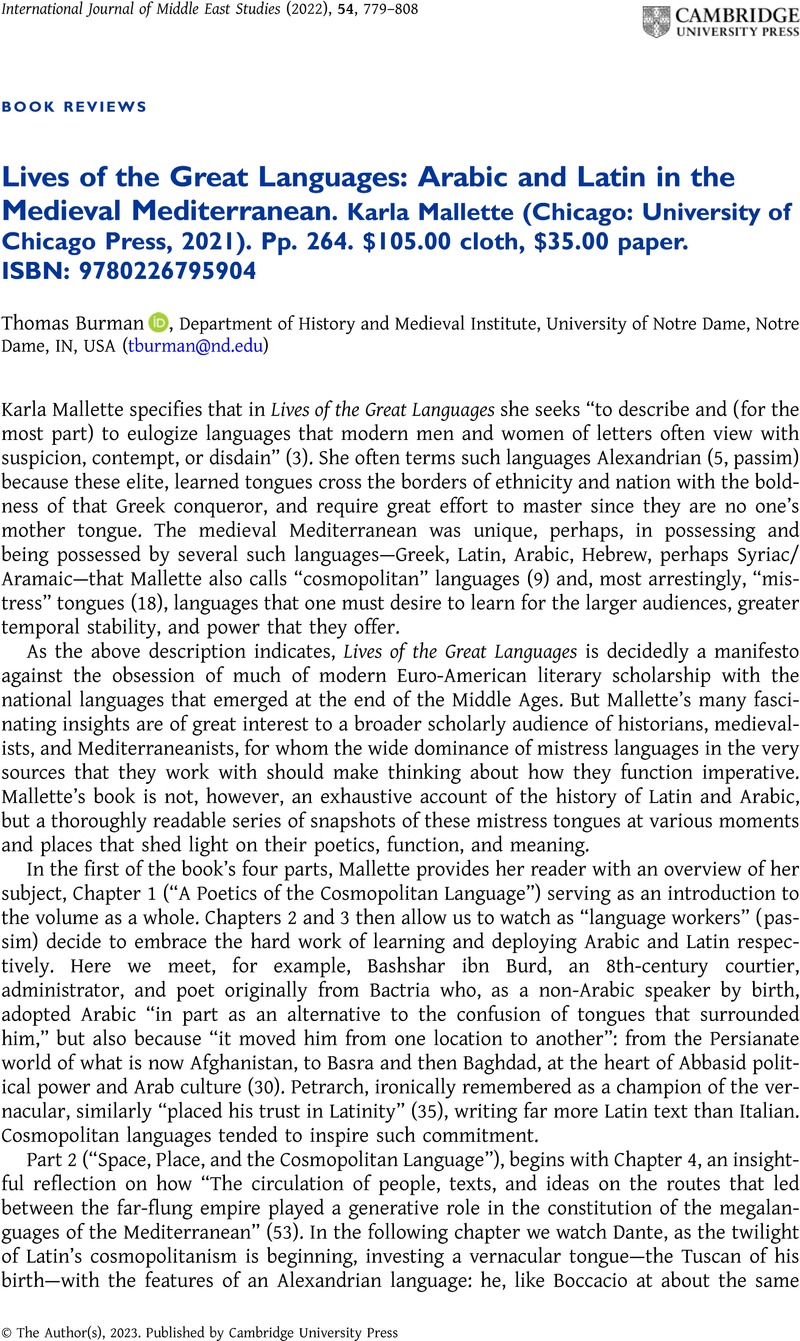No CrossRef data available.
Article contents
Lives of the Great Languages: Arabic and Latin in the Medieval Mediterranean. Karla Mallette (Chicago: University of Chicago Press, 2021). Pp. 264. $105.00 cloth, $35.00 paper. ISBN: 9780226795904
Review products
Lives of the Great Languages: Arabic and Latin in the Medieval Mediterranean. Karla Mallette (Chicago: University of Chicago Press, 2021). Pp. 264. $105.00 cloth, $35.00 paper. ISBN: 9780226795904
Published online by Cambridge University Press: 16 February 2023
Abstract
An abstract is not available for this content so a preview has been provided. Please use the Get access link above for information on how to access this content.

- Type
- Book Review
- Information
- Copyright
- Copyright © The Author(s), 2023. Published by Cambridge University Press



